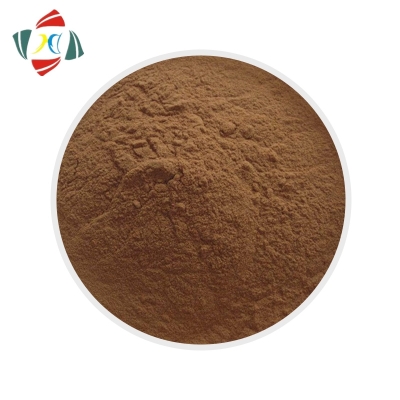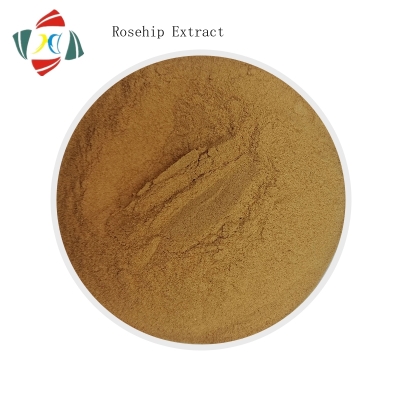-
Categories
-
Pharmaceutical Intermediates
-
Active Pharmaceutical Ingredients
-
Food Additives
- Industrial Coatings
- Agrochemicals
- Dyes and Pigments
- Surfactant
- Flavors and Fragrances
- Chemical Reagents
- Catalyst and Auxiliary
- Natural Products
- Inorganic Chemistry
-
Organic Chemistry
-
Biochemical Engineering
- Analytical Chemistry
- Cosmetic Ingredient
-
Pharmaceutical Intermediates
Promotion
ECHEMI Mall
Wholesale
Weekly Price
Exhibition
News
-
Trade Service
*For medical professional reading reference only
5.The study shows for the first time that muscle loss and weight loss are more common and have a higher risk of death in people with low serum urate (SU)
That is to say, low SU should indeed be responsible for the high risk of death of patients, but it is not very accurate to say that all the "criminals" should be added to low SU itself
The study used adult (≥20 years old) National Health and Nutrition Examination Survey (NHANES) whole-body dual-energy X-ray absorptiometry (DXA) data from 1999 to 2006 and classified NHANES participants for SU levels (defined as normal ranges).
Body composition assessments included BMI, waist circumference, BMI for maximum life expectancy, and age-, sex-, and ethnicity-specific appendix lean mass index (ALMI) and fat mass index (FMI) Z-scores
The results of the study are as follows:
Among 13,979 participants, low SU levels (<2.
The proportion of patients with low ALMI Z scores was 29% in the low SU group compared with 16% in the normal SU group (p=0.
Before adjusting for body composition, low SU was associated with increased mortality (HR 1.
That said, muscle loss and weight loss were more common in people with low SU levels
In fact, many observational studies have linked low SU levels with adverse outcomes such as dementia, Parkinson's disease, and early mortality, arguing that excessive SU reduction is the cause of adverse outcomes
.
Therefore, the relevant guidelines for gout also recommend cautious use of SU-lowering therapy, which may affect optimal gout management
.
However, it may be overlooked that SU levels are actually closely related to obesity and nutritional status, especially that increased visceral fat and the presence of metabolic syndrome are associated with higher SU levels
.
Therefore, is it all kinds of diseases caused by low SU itself? The above studies have already given good answers
.
Then let's ponder, given the association between SU and body composition, whether low SU levels occur in the context of pathological weight loss and sarcopenia, which may be the root cause of poor outcomes and mortality due to low SU reason
.
However, studies evaluating the association between muscle loss and SU are often limited in explaining the confounding effects of obesity, as muscle mass and fat mass are closely related to each other
.
Some studies have found that higher SU levels are associated with better muscle function and greater muscle mass
.
However, there are also studies that hold the opposite view
.
Therefore, whether low SU levels parallel the development of sarcopenia is unclear, and better methods are needed to separate the assessment of muscle and fat
.
5.
7 mg/dl, or an inflection point in the association between SU and mortality riskThe study took this issue a step further by developing methods in NHANES to quantify muscle mass versus fat mass and validating the definition of relative sarcopenia based on these measurements
.
Therefore, the association between SU and relative sarcopenia can be assessed using accurate whole-body DXA measurements independent of fat mass
.
SU levels and body composition
The relationship between SU levels and low lean mass was non-linear (Figure 1).
In patients with SU levels below 5.
7 mg/dl, relatively higher SU levels were associated with lower probability of myocytopenia and lower relative myocytopenia
.
The association between SU levels and myocytopenia and relative myocytopenia was weaker for participants with SU levels >5.
7 mg/dl
.
Figure 1 A: Predicted sarcopenia (low ALMI Z-score) or B: relative myocytopenia (low ALMI FMI Z-score) proportion of patients by SU levelThe low SU group had a 2.
6-fold higher odds of sarcopenia compared with patients with normal SU levels [OR: 2.
62 (1.
96, 3.
50), p<0.
001]
.
The odds of relative sarcopenia were 32% higher in the low SU group compared to the normal SU group, but not statistically significant [or 1.
32 (0.
84, 2.
09) p=0.
23]
.
Compared with patients with normal values, patients in the high SU group had a lower risk of myocytopenia [OR: 0.
42 (0.
34, 0.
51) p<0.
001] and a lower risk of relative myocytopenia [OR: 0.
89 (0.
76, 1.
04] ) p=0.
13]
.
Participants with lower SU also had greater percent weight loss and were more likely to be underweight after adjusting for age, sex, and ethnicity [about 4-fold odds (OR 4.
41, 95% CI 2.
14-9.
09, p<0.
001).
)]
.
In contrast, people with high SU levels had lower rates of underweight and less weight loss
.
SU levels and mortality
In the initial model, a higher risk of death was observed in the low SU group (HR 1.61, 95%CI 1.
14-2.
28, p=0.
008)
.
However, this association with mortality attenuated when DXA-derived body composition parameters and historical weight loss were included in the model (HR 1.
30, 95%CI 0.
92-1.
85, p=0.
13)
.
High SU levels, both before and after adjustment, were associated with higher mortality
.
Table 1: Association between SU and mortality (Model 1 before adjustment, Model 2 after adjustment)
Patients with higher SU levels (per 1 mg/dl) had a numerically lower risk of death when SU values were less than 5.
7 mg/dl [HR 0.
91, 95%CI 0.
84-0.
99, p=0.
03)
.
This effect was attenuated when models for DXA-derived body composition and historical weight loss were further adjusted (HR 0.
98, 95%CI 0.
90-1.
08, p=0.
71)
.
For participants with SU levels above 5.
7 mg/dl, higher SU levels (per 1 mg/dl) were associated with a higher risk of death, which persisted after adjusting for DXA-derived body composition and historical weight loss exist
.
summary
The relationship between low SU levels and mortality was attenuated after adjustment for body composition and was no longer significant;
Low SU levels were strongly associated with sarcopenia, history of weight loss, and underweight status, suggesting that reduced SU may co-occur with the development of pathological weight loss and sarcopenia;
The association between low SU and measures of relative muscle loss (relative to fat mass) was also significant in these analyses
.
The loss of muscle mass is proportionally greater than the loss of fat mass, resulting in relative muscle loss
.
The previous epidemiological association between low SU and high mortality may be the result of chronic disease, which causes sarcopenia and pathological weight loss, which co-occurs with lower SU and leads to confounding
.
When interpreting the association between low SU levels and long-term outcomes, investigators should take care to consider associations with associated confounders such as weight loss, sarcopenia, and cachexia
.
references
Associations between low serum urate, body composition, and mortality.
Arthritis Rheumatol.
2022 Aug 16.
doi: 10.
1002/ art.
42301.
Epub ahead of print.
PMID: 35974440.
Where can I find more rheumatism clinical knowledge?
Come and have a look at the "Doctor Station"👇







